Mike Paro has been on a journey in mind, body, and spirit. Since completing studies at SAIC, he has worked in Antarctica and traveled in Africa, Asia, and Europe. These experiences have profoundly influenced his aesthetic investigations since landing back in Chicago. This week the COMP Magazine visited Paro in his Pilsen studio to discuss the transition from formal studies to establishing a singular artistic voice, his journeys abroad, how myth and place intersect, and what he values in his art practice at this moment in time.
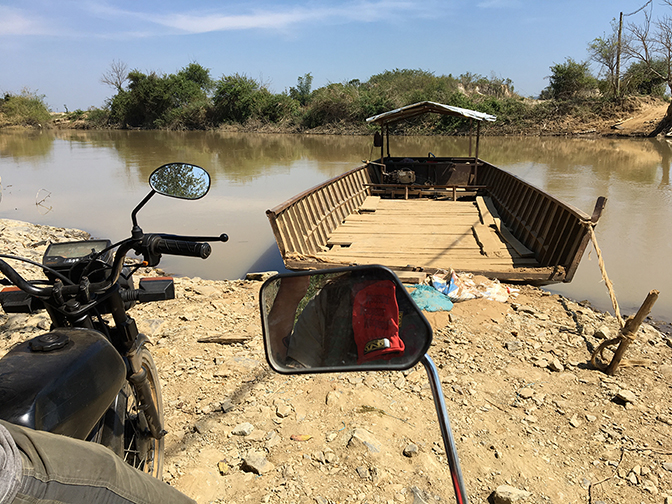
Garrett Collier and Mike Paro waiting for a ferry far into the Vietnamese highlands, 2017
So, you’ve been somewhat in that wanderlust place. Since completing studies at SAIC, you’ve been doing a bit of travel and working abroad. You worked for a stint in Antarctica, followed with travelled to various countries (New Zealand, Ethiopia, etc.) and did a biking tour from Norway to Istanbul, Turkey. What prompted your interest in travel? Can you identify any experiences or items that you see as informing your aesthetic practice?
This period of my life has been wildly experimental. I took a lot of what I had learned as an art student and linked it as wholly as I could to a lived experience. In a sense, it was a time for life as art. The physical world is as much of an interest to me as the cultural world, which are related to the age old problems we face as humans anyway—figure/ground, subject/object, etc. There were a handful of experiences that really stick out as alien. Happenstance encounters or coincidences that really were just manifestations of love, archetypes or something.
For example the Antarctic program (USAP) gives luggage tags. I picked up my blue REI 75L hiking backpack with a USAP luggage tag off the conveyor in Kathmandu. I noticed it was another USAP participant’s exact bag as mine, who ended up meeting the sister of my friend who got me the job in Antarctica for a hike in the Himaylas.
I dreamt that I did a bike tour from Istanbul to the northernmost point of Norway while I was stationed in Antarctica. I think it resonated with me as I experienced a season at the edge of consciousness— the bottom of the earth, where things act really differently. I developed that dream into an actual bike trip. In painting, I think we are allowed a real opportunity to confront unadulterated freedom, my travel was an episode to explore the possibility that painting exists in moments in life as well.
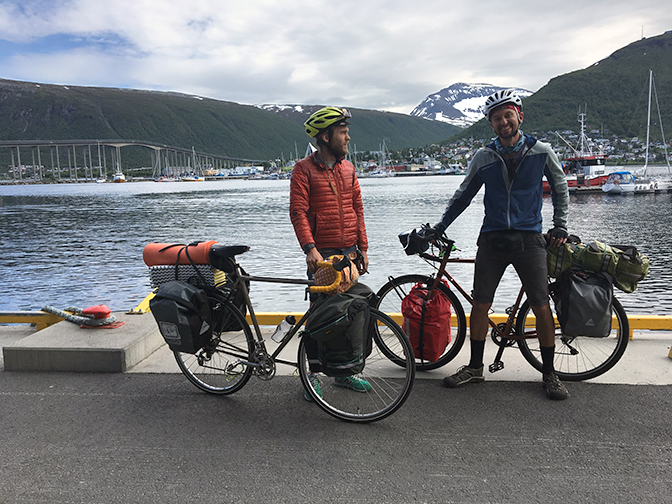
Travis Groh and Mike Paro Tromsø, Norway, 2017
Continuing with the idea of travel. In conversation we discussed a number of artists (Bas Jan Ader, Dan Eldon, Richard Long) where ephemeral experience and travel play a role? I am wandering if you’ve considered these artists or others in relationship to your personal experiences?
I’ve considered a couple of artists I’ve met personally that really inform what I was doing over that year or so of travel. I met Peter von Tiesenhausen in Iceland during a residency. During this time, I made a collaborative work that was a net in a groundwater pool. In hindsight, it was really something about capture. Although it was of and in water I felt I was misguided at the time. Peter shared a life that moved beyond materiality. He finished a life long project in Iceland involving boats he’s carved out of ice. Back in Chicago, I worked as a bike messenger which allowed me some access to the creative time I keep mentioning. After that month I really began to synthesize what he meant by chance time as creativity. Art is so much more an accident or something you trip over.
Jon Bonfiglio is another major influence of mine. He participates in these kind of journeys in waterways. He sails to Antarctica, Tristan de Cuhnha, and through the Amazon, etc. Somehow he facilitates a lot of these trips, including the mundane finance part but the art is really in the ad hoc kind of relationships built along the way. I joined him on a trip—150 miles from Vermont to Beacon, NY on the Hudson river. Water is his element. Archetypically, water is the element of fluidity, wavering emotions, etc. The participants of the journeys are simultaneously navigating this aesthetically phenomenal, unfathomably large fluid structure—a river, a passage, an ocean—while really making human connections along the way. You really start to participate with the myth of a place. The Hudson River Valley is a magic place, well—Iceland is too.
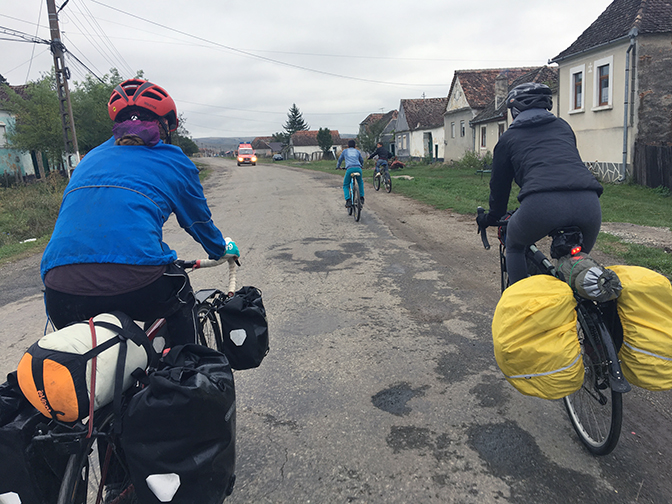
Molly Welsh, Selden Paterson, and Mike Paro with two Roma boy ‘tour guides’ in Romania, 2017
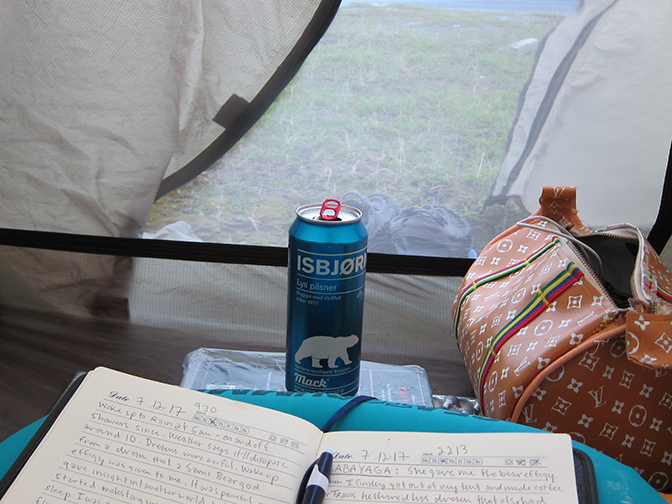
Mike Paro, journaling in Norway, 2017
You work in a variety of media (fiber arts, painting, sculpture, etc.). Can you walk us through your selection process and in terms of the relationship between the conceptual idea and how you select materials?
I stay grounded by playing. Recently, I’ve been seeing a thread in my work that really is just landscape in a different form considering the amount of material that I use that is manufactured in Chicago. I can’t really get away from it, I realized I had used this canvas wallpaper in some pieces a few years ago that was the same canvas wallpaper the dining room in Antarctica was decorated in.
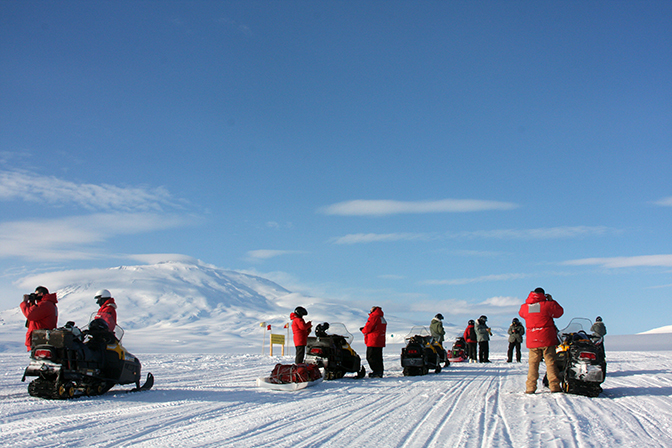
Mike Paro, snowmobile trip to the world’s southernmost active volcano, Mt. Erebus,
with coworkers at McMurdo Station, Antarctica
When considering the series of paintings and sculptural works (the images posted on Cargo, need title of series) I tend to connect this effort with ethnic or tribal artworks. There are primitive formal patterns contrasted with a color palette clearly of this place and time. What was your intent in this series? Where did this work stem from?
Maybe I worked through illustrating a myth of place in artwork. IKEA furniture in “cheapo” apartments with chicago manufactured materials. I grew up in a complicated family. The locus of my attention is completely different now.
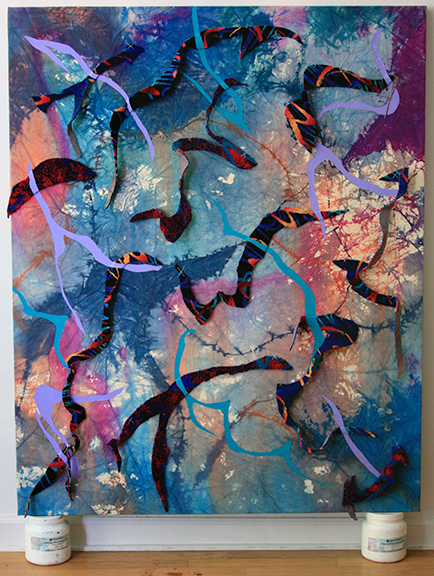
Mike Paro, Unititled, mixed media on dyed canvas, 42″x52″, 2016
Often one of the most difficult aspects in being a young artist is defining one’s voice and and expediting one’s investigations. Where do you see your artistic investigations taking you?
My 20’s have been at their best artistically foundational. I think I have a varied array of tools to build a multi-faceted practice for the rest of my life. I applied to grad school at the same time I applied to work in Antarctica. I was lucky to be accepted to anything during that time, and am extremely grateful I was accepted to go to Antarctica.
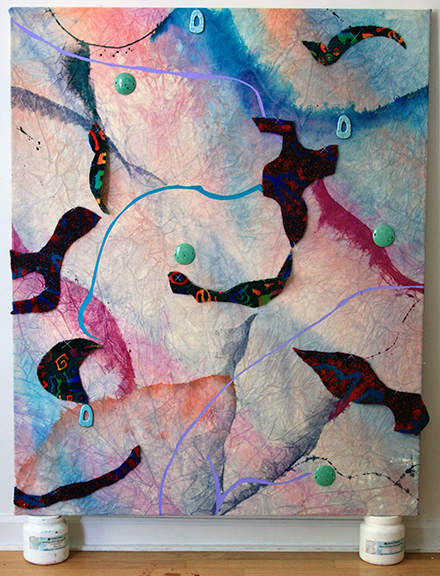
Mike Paro, Unititled, mixed media on dyed canvas, 42″x52″, 2016
What do you value most in your aesthetic practice?
The capacity for aesthetics to reveal myth and create purpose for freedom.
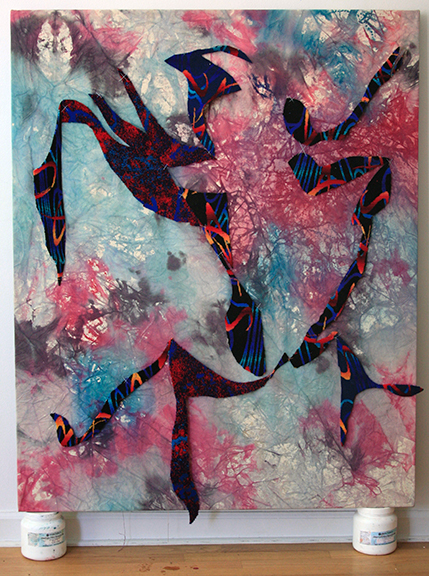
Mike Paro, Unititled, mixed media on dyed canvas, 42″x52″, 2016
This is the transient midway point of year for many artists. What’s the plan for the remainder of 2018? What is your current focus? Any upcoming travel on the horizon?
I’m back in the studio—which is a different, internal, learning process.
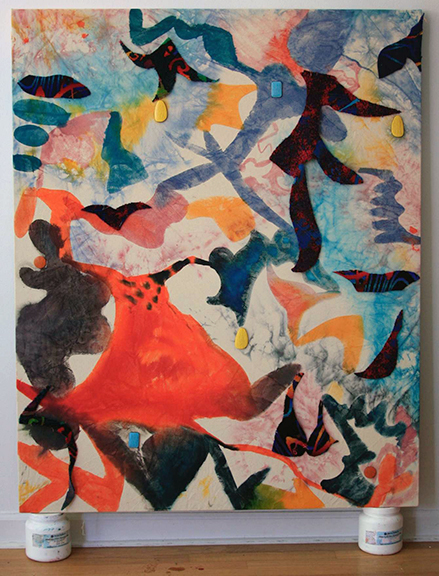
Mike Paro, Unititled, mixed media on dyed canvas, 42″x52″, 2016
For additional information on the art practice and travels of Mike Paro, chesk out:
Mike Paro – http://cargocollective.com/mikeparo/Home
Chicago Magazine – http://www.chicagomag.com/arts-culture/June-2015/high-art/
Chicago Artists Resources – http://www.chicagoartistsresource.org/artist-stories/growing-through-collaboration-arts-life-mentorship-partnership
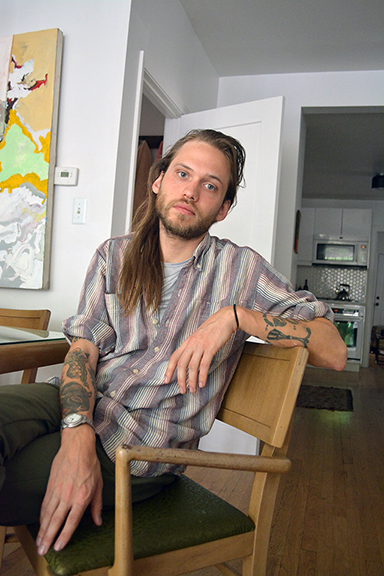
Mike Paro, artist, Chicago, 2018
Artist interview and portrait by Chester Alamo-Costello


